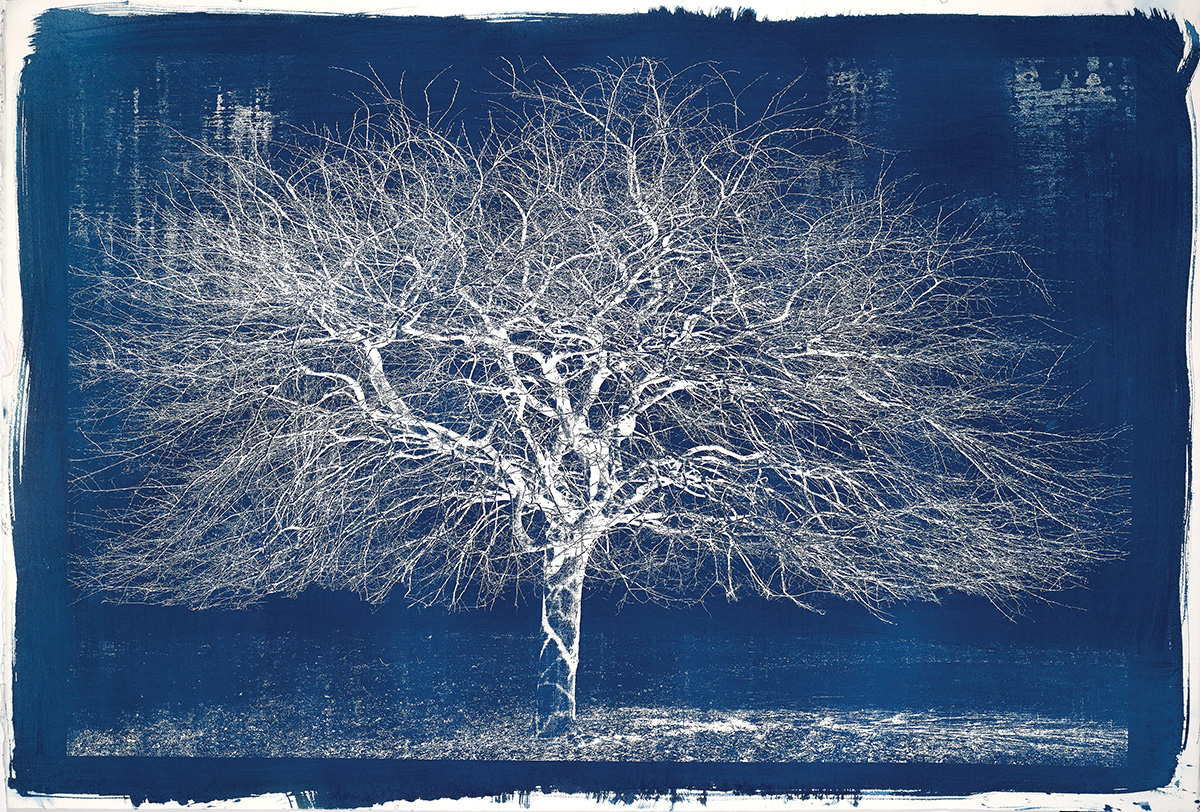How Michael Eastman Turned Isolation into Opportunity
Quarantine offered time and space to explore the centuries-old cyanotype process.
• May 2021 issue
“I am always worried about repeating myself. So I decided to go where I’d never gone before,” says award-winning photographer Michael Eastman on why he’s begun experimenting with cyanotype. The printing process dates to the middle of the 19th century and was widely used to produce blueprints and diagrams.
The fine art photographer says he’s always been interested in alternative printing processes, and while “cooped up” during the coronavirus quarantine, he realized printing cyanotypes would allow him to produce artwork entirely by himself in his studio and darkroom. He’d long wanted to experiment with producing cyanotypes but never had the time. “I turned my isolation into an opportunity,” he says.
For subject matter he looked to an area he knew well, nearby Forest Park. During lockdown he went several times a week to photograph its trees, which he featured in his 1992 book, “The Forgotten Forest.” Back in his St. Louis, Missouri, studio, using the somewhat crude cyanotype process that involves exposing treated paper to sunlight, Eastman was never exactly sure how his images would turn out. “But I liked the element of surprise and exploration that is part of this process,” he explains.
He’s described the images of the park’s white trees against the dark sky as both powerful and haunting. “They are a little scary, too, don’t you think?” he asks. “And I think they’re representative of this scary time we’ve been living in.”
RELATED: For Michael Eastman, all the world's his subject
Robert Kiener is a writer in Vermont.


 View Gallery
View Gallery


